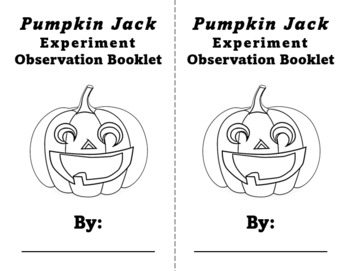Pumpkin Jack Experiment Observation Book- Editable, Low prep
Elementary with Emma
17 Followers
Grade Levels
PreK - 2nd
Subjects
Resource Type
Standards
CCSSRI.K.10
CCSSCCRA.R.2
NGSSK-ESS3-1
NGSSK-LS1-1
Formats Included
- Zip
Pages
9 pages
Elementary with Emma
17 Followers
What educators are saying
The perfect resource after reading the story pumpkin jack and starting the science experiment "pumpkin in a jar".
Description
I created this booklet to go along with the book "Pumpkin Jack" by Will Hubbell. I place a pumpkin in a jar and seal it closed and have students observe and draw pictures of what the pumpkin looks like as it decomposes! The file is editable so you can add more pages or take some away. I run the experiment through the entire month of October, but you could go longer if you'd like! It also includes a review of the pumpkin life cycle at the end of the book as review.
Total Pages
9 pages
Answer Key
N/A
Teaching Duration
N/A
Report this resource to TPT
Reported resources will be reviewed by our team. Report this resource to let us know if this resource violates TPT’s content guidelines.
Standards
to see state-specific standards (only available in the US).
CCSSRI.K.10
Actively engage in group reading activities with purpose and understanding.
CCSSCCRA.R.2
Determine central ideas or themes of a text and analyze their development; summarize the key supporting details and ideas.
NGSSK-ESS3-1
Use a model to represent the relationship between the needs of different plants or animals (including humans) and the places they live. Examples of relationships could include that deer eat buds and leaves, therefore, they usually live in forested areas; and, grasses need sunlight so they often grow in meadows. Plants, animals, and their surroundings make up a system.
NGSSK-LS1-1
Use observations to describe patterns of what plants and animals (including humans) need to survive. Examples of patterns could include that animals need to take in food but plants do not; the different kinds of food needed by different types of animals; the requirement of plants to have light; and, that all living things need water.





